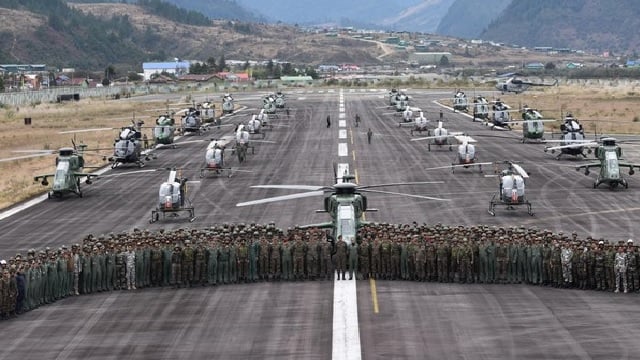In a remarkable display of military coordination and capabilities, the Indian Army, Navy, and Air Force conducted a comprehensive joint exercise named ‘Poorvi Prahar,’ spread over nine days. This significant undertaking showcased their warfighting skills within near-real combat scenarios, underscoring the effectiveness of their collaboration in various operational domains.
The exercise emphasized the critical importance of joint structures for intelligence gathering, surveillance, reconnaissance, and rapid mobilization. It highlighted how seamlessly the forces could deploy and redeploy, further enhancing operational logistics. The successful execution of these tasks during the exercise reaffirmed the Indian Armed Forces’ exceptional combat capabilities, particularly their precision strike capabilities using state-of-the-art equipment.
Notably, the exercise demonstrated a robust integration among the three armed services. With the evolving nature of civil-military fusion seen as vital for achieving operational success, the participation of high-ranking officials such as Lt Gen RC Tiwari, General Officer Commanding in Chief of Eastern Command, and Air Marshal IS Walia, Senior Staff Administrative Officer from Eastern Air Command, added to the exercise’s significance. They observed offensive maneuvers conducted in challenging mountainous terrains, supported by cutting-edge weaponry.
The Army Commander commended the precision and synchronization demonstrated by the troops during the exercise, stressing the necessity of joint operations to enhance the synergy among the Army, Navy, and Air Force. For the first time, integrated joint operations were executed on a large scale within the Eastern Theatre, showcasing the might of the Indian Armed Forces.
Throughout the exercise, various advanced weapon systems were deployed, including the M-777 Howitzer, the Navy’s P-8I Maritime Patrol and Reconnaissance aircraft, swarm drones, First Person View (FPV) drones, and loitering munitions. The incorporation of the latest helicopters, such as the Chinook and Light Combat Helicopter Prachand, further amplified operational effectiveness.
During ‘Poorvi Prahar,’ the Indian Armed Forces executed complex operations that encompassed air, land, and sea components. The integration of three-dimensional warfare was significantly enhanced by new generation equipment, proving the forces’ precision and efficiency in difficult terrains and within a dense Electronic Warfare environment. In addition, the exercise featured tri-services combat free fall operations conducted by special forces on designated objectives, demonstrating advanced tactical capabilities.
This exercise not only stands as a testament to India’s dedication to maintaining a strong defense posture but also reflects the importance of synergy and integration within its armed forces. The successful execution of ‘Poorvi Prahar’ reinforces the operational readiness of the Indian military and assures citizens that the country is well-prepared to address any future security challenges.






